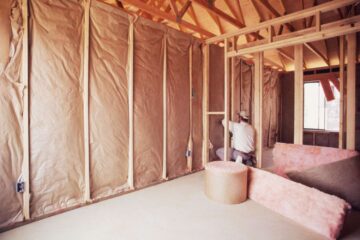In an era where energy efficiency and sustainability are paramount, glass wool insulation has emerged as a leading solution for builders, architects, and homeowners alike. This versatile material, composed of fine glass fibers, offers exceptional thermal and acoustic insulation, making it an indispensable component in modern construction. Whether used in residential homes, commercial buildings, or industrial facilities, glass wool provides a cost-effective and environmentally friendly way to enhance comfort while reducing energy consumption.
Glass wool is manufactured through a sophisticated process that involves melting recycled glass and spinning it into thin, intertwined fibers. These fibers create a dense yet lightweight matrix filled with tiny air pockets, which effectively trap heat and dampen sound waves. The result is a material that excels in regulating indoor temperatures, keeping spaces warm in winter and cool in summer. Unlike traditional insulation materials, glass wool does not settle over time, ensuring long-term performance without degradation.
One of the most compelling advantages of glass wool is its outstanding thermal insulation properties. By minimizing heat transfer through walls, roofs, and floors, it significantly reduces the need for excessive heating or cooling, leading to lower energy bills. This aligns with global efforts to promote green building practices and reduce carbon footprints. Additionally, glass wool is non-combustible, adding an extra layer of fire safety to structures. Its ability to withstand high temperatures without emitting toxic fumes makes it a preferred choice for fire-resistant construction.
Beyond thermal benefits, glass wool is highly regarded for its acoustic insulation capabilities. The fibrous structure absorbs and disperses sound waves, making it ideal for use in theaters, recording studios, offices, and residential buildings where noise reduction is crucial. Whether blocking external traffic noise or preventing sound transmission between rooms, glass wool creates quieter, more peaceful environments.
Sustainability is another key factor driving the popularity of glass wool. Made primarily from recycled glass, it contributes to waste reduction and resource conservation. The production process itself is energy-efficient, and the material is fully recyclable at the end of its lifespan. Unlike some synthetic insulation alternatives, glass wool does not release harmful volatile organic compounds (VOCs), ensuring better indoor air quality.
Installation is straightforward, as glass wool is available in rolls, batts, or loose-fill forms, adaptable to various construction needs. Its flexibility allows it to fit snugly around pipes, ducts, and irregularly shaped spaces, eliminating gaps that could compromise insulation efficiency. Builders appreciate its ease of handling, while homeowners benefit from its durability and low maintenance requirements.
As the demand for energy-efficient and eco-conscious building materials grows, glass wool continues to stand out as a reliable, high-performance solution. Its combination of thermal efficiency, soundproofing qualities, fire resistance, and environmental benefits makes it a smart investment for any construction project. By choosing glass wool insulation, builders and property owners not only enhance the comfort and safety of their spaces but also contribute to a more sustainable future.
For those seeking an insulation material that delivers on multiple fronts—energy savings, noise reduction, and environmental responsibility—glass wool remains a top contender in the global market. Its proven track record and adaptability ensure it will remain a cornerstone of modern construction for years to come.



